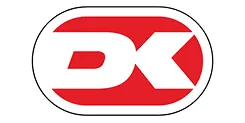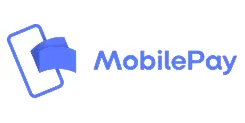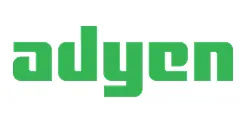Denmark
Digital payments in Denmark
Population
Internet users
Banked population
Payment Gateways in Denmark
Payment methods in Denmark
Denmark’s digital payment ecosystem is among the most advanced in Europe. Here’s what makes Denmark’s e-commerce market different:
- Danes spend nearly $34 billion annually on online retail
- Mobile devices account for more than 40% of e-commerce transactions
- The average spending of online shoppers in Denmark is currently $6,000 a year and is expected to reach more than $8,000 by 2027
- Trustly and Klarna are among the most trusted local payment methods
- Danes purchase over $7B worth of goods from global e-commerce platforms

Dankort
Dankort is Denmark’s national debit card, and by far the most used payment method in the country. With over 4.5M users, it’s accepted both online and offline, often in combination with Visa or Mastercard to enable international payments. Since 2015, Dankort has been promoting contactless payments, which now make up more than 80% of all Dankort transactions.
| Feature | Description |
|---|---|
| Requirements | Danish business registration and acquiring agreement |
| Accepted payment methods | Debit cards (Dankort), Co-branded Visa/Mastercard |
| Available in | Primarily Denmark |
| Supported currencies | DKK (main), supports others via Visa/Mastercard network |
| RequirementsDanish business registration and acquiring agreement | |
| Accepted payment methods Debit cards (Dankort), Co-branded Visa/Mastercard | |
| Available inPrimarily Denmark | |
| Supported currenciesDKK (main), supports others via Visa/Mastercard network |
Pros
- Most trusted card in Denmark
- High user penetration
- Low fraud rates and high user familiarity
Cons
- Limited use outside Denmark (without Visa co-brand)
- Not the best service for international companies

MobilePay
MobilePay is Denmark’s most popular digital wallet app, with more than 4M Danes using it — more than two-thirds of the country’s residents. Initially developed by Danske Bank, it’s now accepted as a national standard for P2P, in-store and e-commerce payments throughout the country. In 2021 only, over €23B was transacted by customers. The app links directly to Danish bank accounts, making the transferring process fast and secure.
| Feature | Description |
|---|---|
| Requirements | Danish bank account and CVR number (for business) |
| Accepted payment methods | Mobile transfers, card-linked wallet |
| Available in | Denmark and Finland (limited business access in FI) |
| Supported currencies | DKK |
| RequirementsDanish bank account and CVR number (for business) | |
| Accepted payment methodsMobile transfers, card-linked wallet | |
| Available inDenmark and Finland (limited business access in FI) | |
| Supported currenciesDKK |
Pros
- High popularity and credibility among Danish consumers
- Quick transfers and low friction
- Government-recognized for security compliance
Cons
- Requires Danish bank account
- Not available to businesses without local registration
Stripe
For businesses in Denmark, Stripe is one of the most flexible payment gateways. It accepts global and local digital payments, has built-in advanced fraud detection, and is chosen by many e-commerce, SaaS, and subscription-based platforms. With Stripe, Danish businesses can accept credit cards, wallets, and local payment methods, including MobilePay and Klarna.
| Feature | Description |
|---|---|
| Requirements | Business bank account, company registration |
| Available in | 40+ countries including Denmark |
| Supported currencies | 135+ (incl. DKK, EUR, USD) |
| RequirementsBusiness bank account, company registration | |
| Available in40+ countries including Denmark | |
| Supported currencies135+ (incl. DKK, EUR, USD) |
Pros
- Flexible, easy to integrate and customize
- Multi-currency support
- Perfect for scaling from local to international businesses
Cons
- Some advanced features require developer skills
- Chargeback fees may apply

Adyen
Adyen is a global payments platform used by big companies such as Spotify and eBay. In Denmark it allows merchants to accept local cards like Dankort as well as global ones like Visa, Mastercard, and PayPal.
| Feature | Description |
|---|---|
| Requirements | Business verification, onboarding interview |
| Available in | 50+ countries including Denmark |
| Supported currencies | 150+ (including DKK, EUR, USD) |
| RequirementsBusiness verification, onboarding interview | |
| Available in50+ countries including Denmark | |
| Supported currencies150+ (including DKK, EUR, USD) |
Pros
- Highly scalable infrastructure
- Wide variety of local and international payment methods
- Transparent pricing model
Cons
- Could be complicated for small companies
- Custom pricing — no public flat-rate fees
2Checkout
2Checkout (now owned by Verifone) is a global digital commerce provider that supports payments, subscriptions and billing automation. It has flexible checkout, compliance tools, and supports 100+ currencies.
| Feature | Description |
|---|---|
| Setup fee | Free |
| Requirements | Business verification, supported product type |
| Available in | 200+ countries, including Denmark |
| Supported currencies | 100+ (including DKK, EUR, USD) |
| Setup feeFree | |
| RequirementsBusiness verification, supported product type | |
| Available in200+ countries, including Denmark | |
| Supported currencies100+ (including DKK, EUR, USD) |
Pros
- Global availability with extensive currency and language support
- Simple onboarding process
- Flexible plans for startups and enterprises
Cons
- Transaction fees are a bit higher than the local gateways
- Limited customization for checkout page design
FAQ
Which payment method is used in Denmark?
The most popular options are Dankort, MobilePay and international cards (Visa, Mastercard). MobilePay is widely used for mobile and peer-to-peer payments.
Does Denmark support PayPal?
Yes. PayPal is a common method of payment for most Danish online stores specially for those targeting international customers. However, it’s not as popular as MobilePay or card payments.
